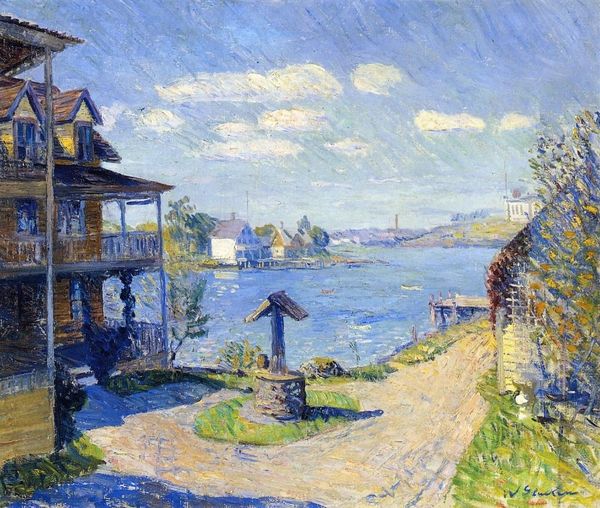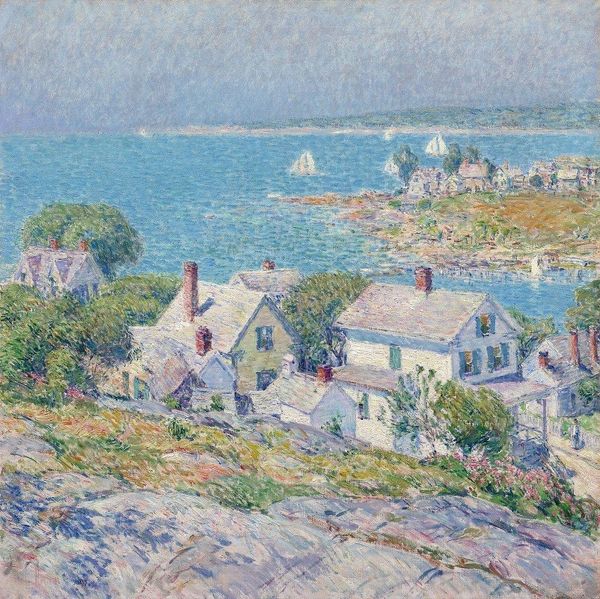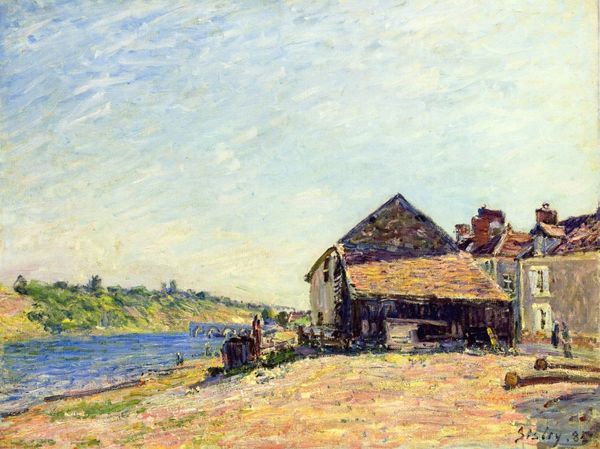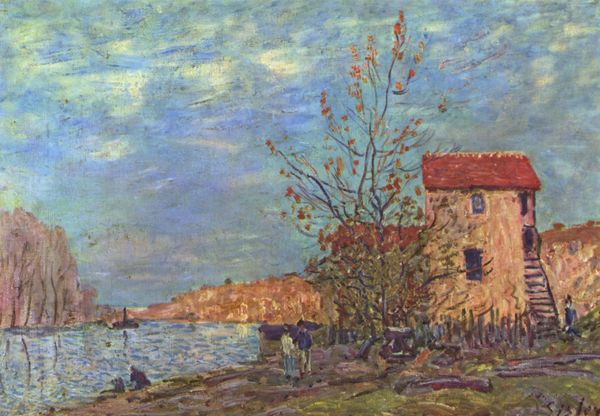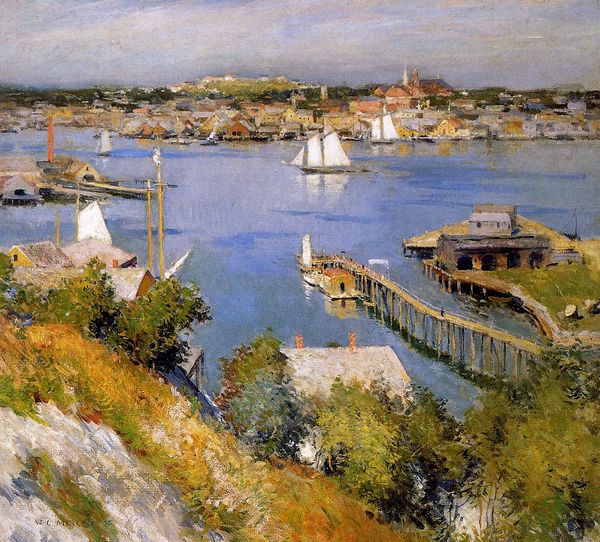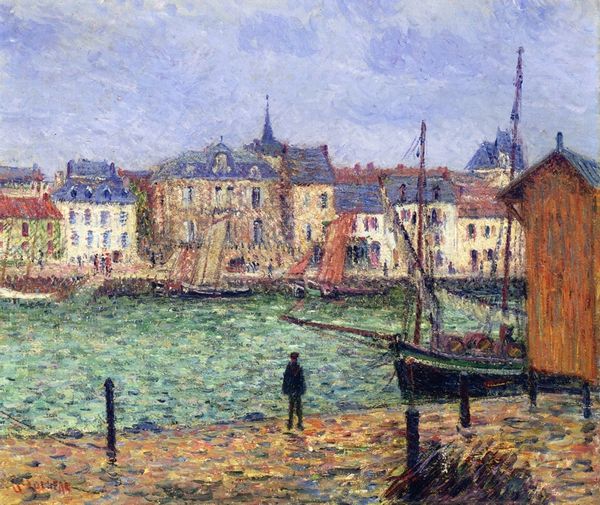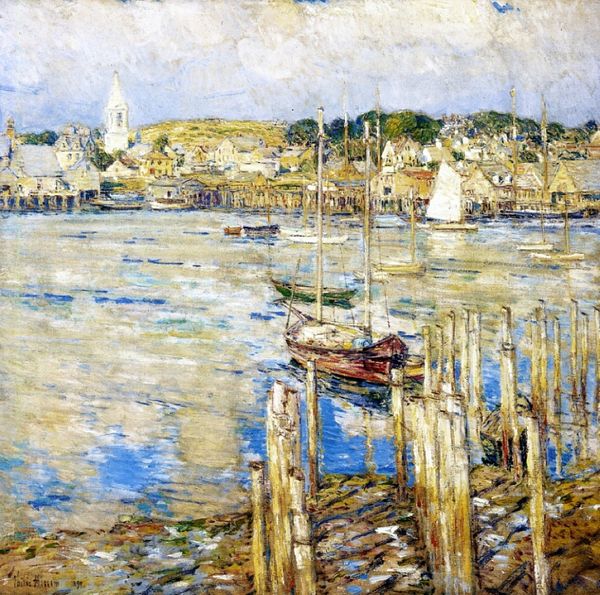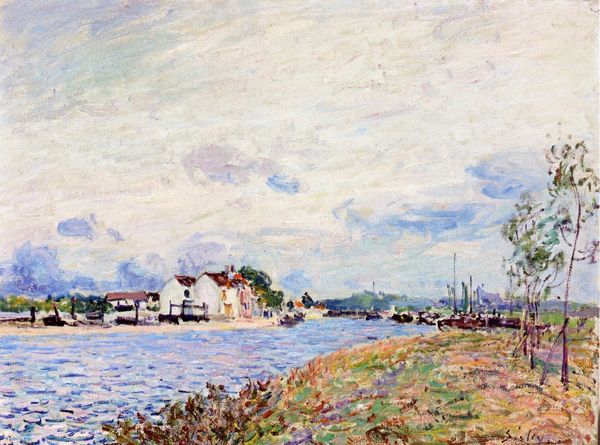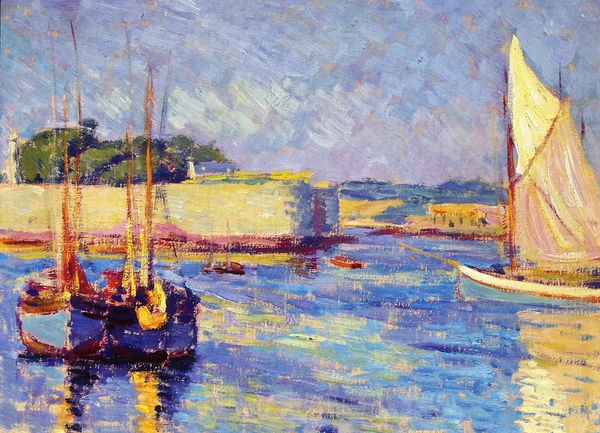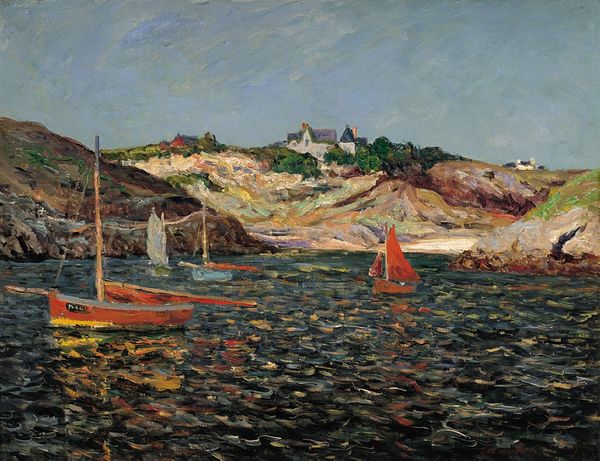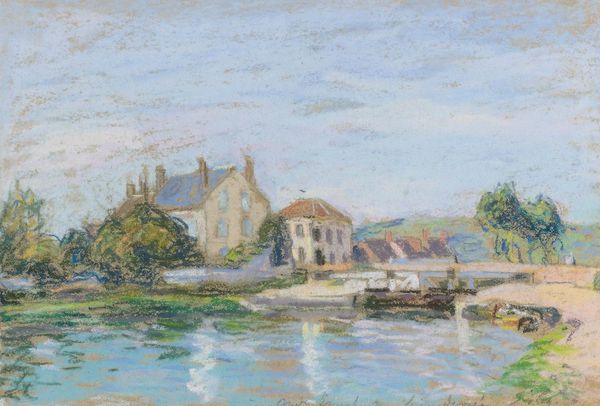
Dimensions: 63.5 x 76.2 cm
Copyright: Public domain
Editor: So, this is William Glackens' "New Castle, New Hampshire," painted in 1909. It's an oil painting, and I love how bright and sunny it feels. The buildings and boats seem so full of life. What's your take on this piece? Curator: It's interesting to see Glackens engaging with Impressionism. We often see him in the Ashcan School, documenting urban grit, but here, he presents a scene of leisure. How do you think this depiction of New Castle connects with the socio-economic realities of the time? Editor: That's a good question! Maybe this painting caters to a specific audience, portraying a kind of idealized vacation spot. Is that fair? Curator: Exactly! Consider the rise of seaside tourism in the early 20th century. Art increasingly played a role in promoting places like New Castle as desirable destinations. What do you observe about the composition? Is there something unusual about it? Editor: The composition is very interesting; how the road on the left is leading us into the seaside view, right? And the strong diagonal of the fence really guides the eye too. Curator: Indeed, and it's more than that. The way Glackens flattens the space, with the buildings and water almost on the same plane, shows the influence of Japonisme, which was very fashionable among Impressionist painters in Europe and America. Do you notice the impasto strokes too? Editor: Absolutely, the thick paint makes it almost three-dimensional. I wouldn't have connected it to Japonisme without you pointing it out, though. Curator: Glackens is negotiating his role as an artist. On the one hand, he presents an apparently unvarnished view of everyday life. On the other, he wants to be accepted within the established art world. He is doing this by adopting some of the stylistic elements favored at the time. Editor: It is quite thought-provoking to see how art can be simultaneously a product and a driver of social trends. Curator: Indeed. And understanding this intersection is key to grasping art's complex relationship with society and commerce.
Comments
No comments
Be the first to comment and join the conversation on the ultimate creative platform.
